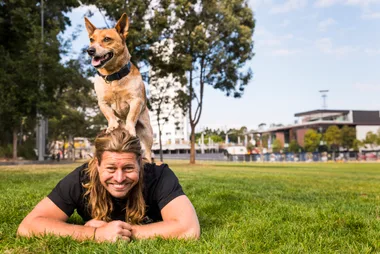Selected as the Great Read in the October issue of The Australian Women’s Weekly. I can recognise most of the faces that appear from underneath the fur-line hoods, fluffy scarves and woolly hats. Rugged up against the alpine cold, only about fifty locals are in Consuma now. The summer crowds, the holidaymakers who prefer the drier, cooler climate of the mountains to the humidity of the Tuscan seaside, have long gone home. Only the people who were born here are courageous enough to face the winter, and most of them are hardened pensioners with a remarkable resistance to the cold. The Consuma people are tough, rugged, worn – just like their mountains.
The snow hasn’t arrived yet at Consuma, though today could be the day. It’s almost Christmas and they say that when the clouds across to the other side of the Apennine alps are black and angry, snow is on its way. The official name of the village is Il Passo della Consuma (Consuma Pass). It’s at the top of the Tuscan north-central Apennine mountains, and the ‘pass’ used to be the only way over the alps to the province of Romagna on the other side. Over in the distance, the Romagna clouds look dark and nasty. If the saying is true, snow should fall by this afternoon.
The people I see as I drive through the village gave their children over to the nearby towns of Florence or Arezzo many decades ago so that the new Consuma generation could make a living out of something apart from farming and labouring. But if they don’t come back home soon, this tiny slate-grey village will become just another summer vacation destination that is shuttered and deserted during the long winter months. Strangely, I find the thought quite upsetting. I hadn’t realised I cared so much.
I drive on further, past the café where Giovanni always goes for coffee. Sure enough, his two best friends are standing outside with their hands stuffed into their pockets, their breath clouds of vapour like two dragons breathing smoke at each other. I’Magnano and Diavolino (‘strong man’ and ‘little devil’) are famous for playing tricks on people. They’re always ready to laugh. Even now that they’re pushing eighty, they’re still the village pranksters. When Giovanni’s with them, he laughs so hard his nostrils flare and his eyes get teary. I rarely get the joke, but the sight of Giovanni’s nostrils going white with the strain of his glee makes me crack up, too.
I’Magnano and Diavolino aren’t their real names; they’re nicknames. Everyone up here has one. I don’t think I know even one of Giovanni’s friends’ real names. I have a nickname too – Assuntina, they call me, after a local woman who liked a drink. I like to keep the wine on the table and have another drink after the food has been taken away. Reason enough, according to them, to call me Assuntina.
I spot the i’Picchio (‘the woodpecker,’ undoubtedly a reference to his W.C. Fields nose) on his way to the café. He has a crush on my blonde Brisbane girlfriend. They danced together one night after he’d braved the three-kilometre walk down the icy dirt road that runs from the main road through the woods down to Giovanni’s isolated farmhouse, known for centuries as Pratiglioni. I’Picchio had squeezed my friend just a little too tightly as he twirled her around the living room to some merry Italian accordion music on the radio. Even though someone had sticky-taped the aerial on to the window, the reception was still appalling. Everyone was red-faced from laughter, the fire and the heat from our thick sweater. I’Picchio might be a weather-beaten old farmer from up in the Tuscan mountains, but he’s not silly and he is, after all, Italian. If he could give a pretty woman a squeeze, he wasn’t going to let the opportunity slip by, even if it meant having to scrabble down the dangerous road to Pratiglioni.
The villagers venture out of their warm home at around ten in the morning for a coffee at one of the three bars in town. Most people go to Giovanni’s favourite, Bar Consumi, because it’s bigger and has the best selection of homemade schiacciatas, brioches and pastries. It belongs, as does everything up here, to one of Giovanni Consumi’s distant cousins. It’s a bit like the old TV program The Waltons, only everyone up here is a Consumi on Consuma Mountain.
Bar Consumi’s counter is eight metres of total food heaven. Three rows of glass shelves curve and straighten around the main meeting area, the espresso machine. On each shelf are silver trays laden with freshly baked Tuscan specialties. To the left of the coffee machine are various pastries stuffed with custard cream, jam or chocolate. Then there are raisin snails, frosted fruit pockets and sugary buns. There are little cakes, like scones, with almonds, sultanas and pine nuts, and sponge cakes filled with freshly whipped cream, then fig or apricot jam tarts, and biscuits dipped in dark chocolate. The shelves to the right of the coffee machine are dedicated to those who prefer salato to dolce – salt to sugar. The woodfire-baked Florentine schiacciata is like a focaccia but a thousand times better. It’s rolled flatter (schiacciata means ‘squashed’) and topped with olive oil, rosemary and salt. The schiacciata also comes reheated and stuffed with ham, tomato and cheese or porcini mushrooms, or with roasted onions, potatoes, herbs and rucole (rocket).
Most of the locals who are now converging on Bar Consumi will have the same breakfast every morning, the classic Italian cappuccino and brioche, which is a plain light pastry and the best for dunking. Normally, I too would stop at Bar Consumi for my favourite breakfast, because after all these years I know everybody. If they don’t actually know me, they certainly recognise me. ‘It’s the Australian girl, Giovanni’s son’s girlfriend,’ they say. But this morning isn’t like any other morning and my mood is as churlish as the weather. I don’t feel like stopping for a coffee and a chat, because I’d have to force a smile. After almost two decades of heartbreaking travel between Italy and Australia, I’ve made up my mind and decided to go home.
Newsletter conversion description. Get the latest in your inbox.




































.png?resize=380%2C285)











